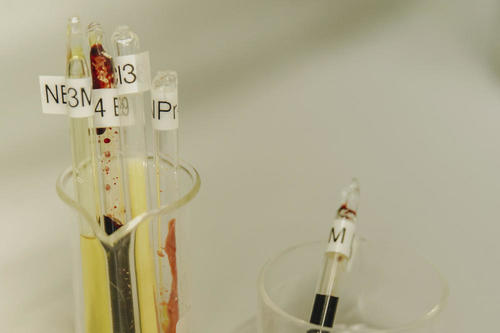Sustainable Halogen Chemistry
More Sustainable Halogen Chemistry.
In spite of the phasing out of chlorine chemistry [1] as well as the current environmental discussions about some fluorinated [2] or brominated compounds, the use of halogens in chemical processes and products is still necessary. Aware of this problem, it is part of the self-image of modern chemistry to establish a more sustainable halogen chemistry, for example by developing more resource-efficient processes, optimizing recycling processes, or synthesizing new substitutes.
Our working group works on the following topics, for example:
SF6 replacements: Sulfur hexafluoride (SF6) is the standard gas in the electrical industry, with the best insulation and extinguishing properties for medium and high voltage devices / systems. The only notable disadvantage is its large greenhouse gas potential (GWP, Global Warming Potential), which is 23,800 CO2 equivalents (over 100 years). One of our goals is to develop SF6 substitutes that have similar insulation and extinguishing properties to SF6, but have a significantly reduced GWP.
Halogen storage: Safe and easy storage of elemental chlorine in large quantities still poses great challenges for the chemical industry. Around 75 million tons are produced worldwide each year and usually directly used in chemical processes. Industrial storage of very large quantities is hardly possible due to the risk of leakage. Even with the small amounts used to chlorinate bathing water in swimming pools (50 l pressurized gas bottle), leaks regularly lead to large-scale operations with the fire brigade and ambulance. A chemical chlorine storage material could remedy this and could also be used to make the high energy requirements for the production of elemental chlorine through electrolysis more resource-efficient by adapting the production rate to the availability of electricity (regulation of the electricity grids)
Publications:
- P. Voßnacker, N. Schwarze, T. Keilhack, M. Kleoff, S. Steinhauer, Y. Schiesser, M. Paven, S. Yogendra, R. Weber, S. Riedel ACS Sustainable Chemistry & Engineering, 2022, 10, 9525.
- P. Voßnacker, A. Wüst, T. Keilhack, C. Müller, S. Steinhauer, H. Beckers, S. Yogendra, Y. Schiesser, R. Weber, M. Reimann, R. Müller, M. Kaupp, S. Riedel Science Advances 2021, 7, 40: eabj5186
Videos:
Recycling processes: Modern synthetic strategies can be used to develop novel reactive ionic liquids based. Due to the different chemical potentials of the halogens (F, Cl, Br, I) it is possible to separate mixtures of substances and to send them to a recycling process in order to close the value chain.
Reference
[1] Reinhold Buttgereit „Die Chlorchemie auf dem Prüfstand - gibt es Alternativen?“ Spektrum der Wissenschaft 1994, 8, 108
[2] XiaoZhi Lim „Tainted water: the scientists tracing thousands of fluorinated chemicals in our environment” Nature 2019, 566, 26

